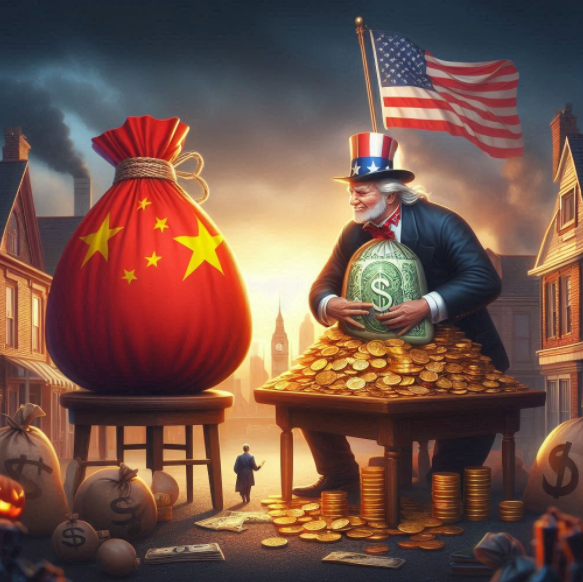The narrative of global wealth is taking a dramatic turn, resembling a grand tug-of-war between the established power of the United States and the ambitious rise of China. In one corner stands Uncle Sam, a financial titan with a staggering $106 trillion in assets, while in the other, China flexes its economic muscles with a growing $63.8 trillion, determined to close the gap at breakneck speed.
The US: A Colossus with Cracks?
The US, the undisputed heavyweight champion for decades, has enjoyed a comfortable reign. Its growth, though steady at 2.2% annually, resembles a seasoned tortoise – plodding and reliable. However, looming political uncertainties cast a long shadow. Upcoming elections promise the usual spectacle: political jousting, acrobatic policy shifts, and a bewildered public unsure of whether to be entertained or alarmed. This season of electoral frenzy could leave investors and businesses navigating a landscape as unpredictable as a rogue pigeon on a busy street.
Meanwhile, the US grapples with its ever-present economic sparring partner – debt. The national debt, America’s not-so-silent partner, continues to swell like a balloon at a birthday party. The Office for Budget Responsibility (the UK’s equivalent of the Congressional Budget Office) echoes concerns, projecting debt levels that might make even the most optimistic economists squirm (Credit Suisse).
China: The Dragon’s Ascent
Across the ring, China – the economic underdog turned overachiever – boasts a phenomenal 20% annual growth rate. That’s right, China’s wealth is flourishing faster than a teenager’s TikTok following. At this pace, China’s $63.8 trillion could morph into a colossal $91.872 trillion in just two years, while the US plods on towards $110.664 trillion (Sources: Wikipedia & Visual Capitalist).
China’s recipe for success is a potent mix of rapid urbanisation, a burgeoning middle class, and a dash of technological innovation. Imagine the nation chugging a can of Red Bull and sprinting towards the finish line, laser-focused on claiming the prize. However, this meteoric rise comes with its own set of hurdles – geopolitical tensions, environmental anxieties, and the occasional hiccup in its economic strategy.
The Tortoise and the Hare: A Modern Economic Fable
In the realm of economic fables, the US would be the tortoise, slow and steady, while China assumes the role of the hare, bounding ahead with relentless vigour. But unlike the classic tale, this isn’t just about speed; it’s about navigating the obstacles along the path. Will the US stumble under the weight of political turmoil and debt burdens? Or will China encounter hurdles that impede its breakneck pace?
Predicting the Champion: A Fool’s Errand
Forecasting the exact moment China might surpass the US is akin to predicting the next twist in an EastEnders episode – full of unexpected turns and cliffhangers. Current projections estimate that if both nations continue on their current trajectories, China could conceivably overtake the US in roughly 5.6 years. This, of course, assumes there are no major plot twists like political upheavals, financial meltdowns, or a particularly disruptive tweet from a certain social media enthusiast (Sources: Visual Capitalist & Credit Suisse).
The Final Curtain: Popcorn at the Ready
As enthralled audiences in this grand economic theatre, we can only grab some popcorn, settle in, and enjoy the show. Whether the US retains its crown or China emerges victorious remains to be seen. One thing’s for certain: the global wealth race is a spectacle not to be missed.
So, dear readers, keep a watchful eye on the financial news, stay informed, and remember – the real victors are those who comprehend the game. Or at the very least, those who find amusement in watching it unfold with a dash of healthy scepticism and a good dose of humour.

